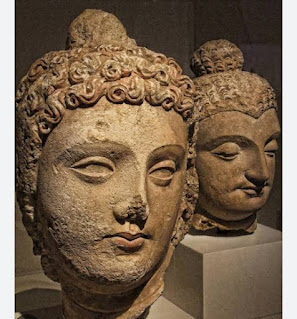From the earliest times, India was inhabited by different castes with great disparity in languages, lifestyles, socio-religious traditions.
The identification of Ethnic Elements in Ancient India is mainly based on physical, linguistic, and cultural traits. Anthropology determines the species of man on the basis of his physical appearance. It has two main standards:
1. Cephalic Index
2. Nasat Index
Ethnic Elements in Ancient India :
We have to accept that people with both long and broad heads existed among the ancient tribes as indicated by ancient skeletons and skulls.
The remains of prehistoric humans in India are very limited, but with the help of elements and linguistics, the species living or occurring here and their contribution to the development of Indian culture have been estimated. BM Guha, after studying prehistoric skeletons, has divided the primitive castes here into six parts.
1. Negrito
2. ProtoSlide
3. Mongolian
4. Mediterranean
5. Western Brachycephals
6. Nordic.
Linguists have included the appropriate species under four language groups-
1. Aastik
2. Dravidian
3. Indo-European
4. Tibeto-Chinese
Their details are as follows- Ethnic Elements in Ancient India
1. Negrito :
It was the oldest species in India. Now it is not freely found anywhere, but its elements can be seen in the Kadar and Paliyan tribes of Andaman Nicobar, Cochin and Travancore, the Angami Nagas of Assam, the Bangari group inhabiting the Rajmahal hills of eastern Bihar, and the Arula. They are tall, broad-headed, thick-lipped, broad-nosed, and black in colour.
Their major contribution is limited to the discovery of the bow and arrow and some religious practices found among the tribals and two-four words. Hadan is of the opinion that Bat-peepal worship, belief related to the soul of the deceased and conception, 'belief related to the guarding of demons on the path to heaven etc. became popular only due to Negrito influence.
2. Protoastraloid
They formed the core of the Indian population and their language belonged to the Austric language group. Some examples of this are found in the Munda dialect of the primitive tribes to this day. Elements of this species are found in prehistoric skulls from Tinveli. The Nishada caste mentioned in Sanskrit literature belongs to this class.
They have short stature, long heads, broad noses, thick lips, dark brown eyes, curly hair, and chalky skin. Traces of this species are found in most of southern India and a few tribes in Madhya Pradesh.
3. Mongolion :
They had knowledge of pottery making and agriculture. There was knowledge of rice, banana, coconut, cotton, etc. The belief in the existence of the soul after death, the use of tambool, vermilion, and turmeric in religious works, Lingopasana, the beginning of the Nishchavar practice, the counting of dates according to the arts of the moon, the beginning of the worship of serpents, Capricorns, elephants, turtles, etc., are acknowledged to be the major contributions of this species to Indian culture.
4. Mediterranean
Three branches of this species came to India and mixed with each other as a result of intermarriage. In a mixed form, their descendants are present in large numbers in India. One of their branches is found in Kannada, Tamil and Malayalam speaking regions, the other in Punjab and the upper valley of the Ganges and the third in Sindh, Rajasthan and western Uttar Pradesh.
Generally the Mediterranean race is said to be related to the Dravidian race. Its skeletons are also found in the Indus Valley civilization. They have long heads, medium height, wide mouth, thin lips, curly hair and brown skin. Their main ones are- nine transport, agriculture and trade commerce, beginning of urban civilization etc.
Some scholars consider the Dravidians to be the creators of the Indus Valley Civilization, but this is doubtful. Linguists are of the opinion that the change in Indo-European language was visible in India. It was the result of Mediterranean or Dravidian contact.
5. western Brachycephalus
They also have three branches - Alpine, Dinaric, and Arminide In Europe, the species is called Alpine due to its proximity to the Alps. The species is found in Gujarat, Bihar, northern and central India. They are broad-shouldered, deep-chested, long and broad-legged, broad-headed, short-nosed, and pale skinned.
Their Dinaric branch lives in Bengal, Orissa, Kathiawar, Kannada, and the Tamil-speaking region, the third branch being the Arminides, whose elements are found in the Parsis of Mumbai. His contribution to Indian culture is not clear.
6. Nordic
This species is considered the representative of the Aryans and the father of Hindu civilization. They had the characteristics of long head, white and pink skin, blue eyes, straight and curly hair. First of all this species must have settled in Punjab and from there it gradually spread to other parts of the country.
But 'Arya' is actually a linguistic term which reveals a language group of Indo-European origin. This is not an ethnic term. Therefore the notion of Aryan immigration is misleading.







